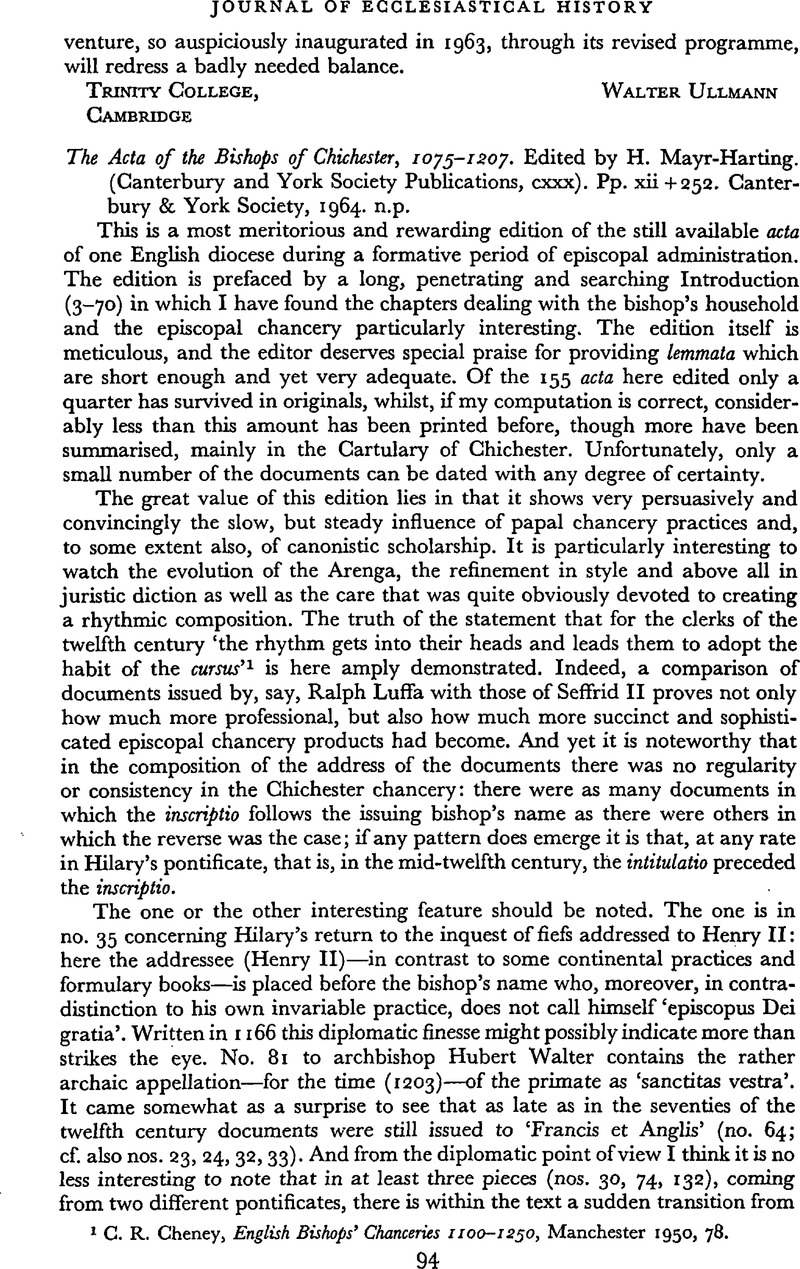No CrossRef data available.
Article contents
The Acta of the Bishops of Chichester, 1075–1207. Edited by H. Mayr-Harting. (Canterbury and York Society Publications, cxxx). Pp. xii + 252. Canterbury & York Society, 1964. n.p.
Published online by Cambridge University Press: 25 March 2011
Abstract

- Type
- Reviews
- Information
- Copyright
- Copyright © Cambridge University Press 1967
References
page 94 note 1 Cheney, C. R., English Bishops' Chanceries 1100–1250, Manchester 1950, 78Google Scholar.
page 95 note 1 For illustrative examples of this period cf. Paulus, N., Geschichte des Ablasses im Mittelalter, i, Paderborn 1922, 177 ffGoogle Scholar.
page 95 note 2 This or a similar clause appears also in the imperial chancery. Cf. for instance the diploma of Lothar III (anno 1135): DL.III.106 and 124 (‘salvo in omnibus jure nostro’). Many years ago E. Mühlbacher noticed its appearance in Frederick I's chancery: ‘salva in omnibus imperiali justitia’ (‘Kaiserurkunde und Papsturkunde’ in Festschrift für Julius Ficker (=suppl. vol. iv of Mitteilungen des Instituts für oesterreichische Geschichtsforschung, 1893), 499 ff., at 511–12.
page 95 note 3 J.L. i 3817: see F. Gescher in his review of Fournier, E., Les origines du vicaire général, Paris 1922Google Scholar in Savigny Zeitschrift, Kanon.Abt. xvii (1928), 611 ff., at 614–27, 633–4; the Alexandrian decretals, ibid., 624 n.3. The importance of this decretal can be gauged by the fact that it was included in a number of contemporary collections, for instance in the Bambergensis, Dertusensis, Eberbacensis, Cantuariensis and Roffensis, see Duggan, C., Twelfth-Century Decretal Collections, London 1963, 126, 163Google Scholar (Cant., I.4) and 174 (Roff., 34); here also the dating 1174–81. Eventually the decretal also went into the Liber Extra, III. vii. 3.


